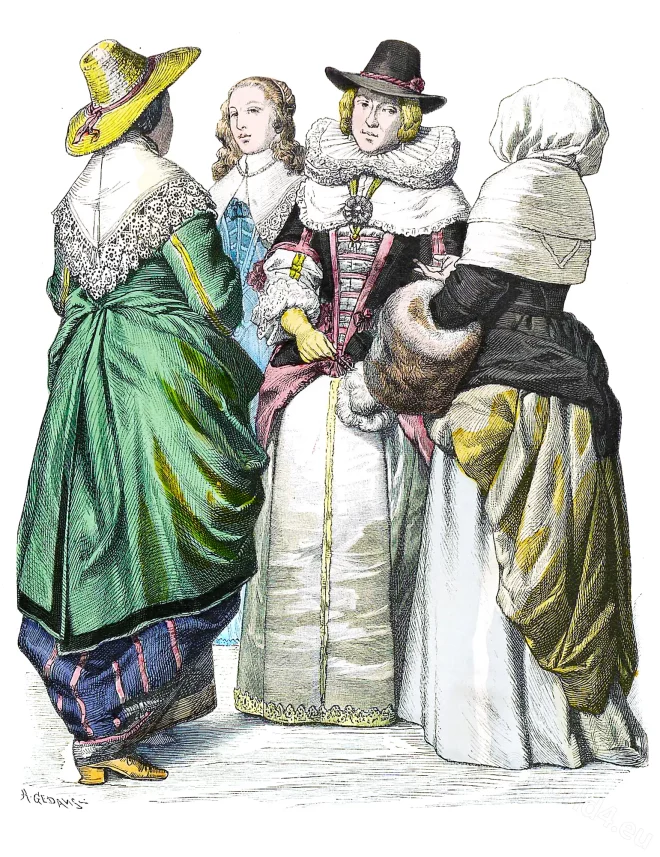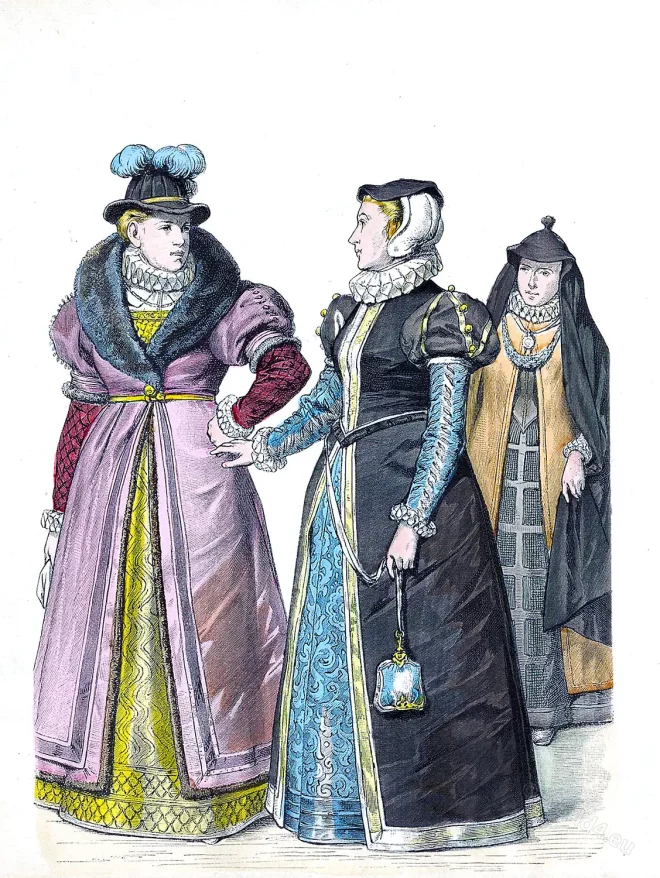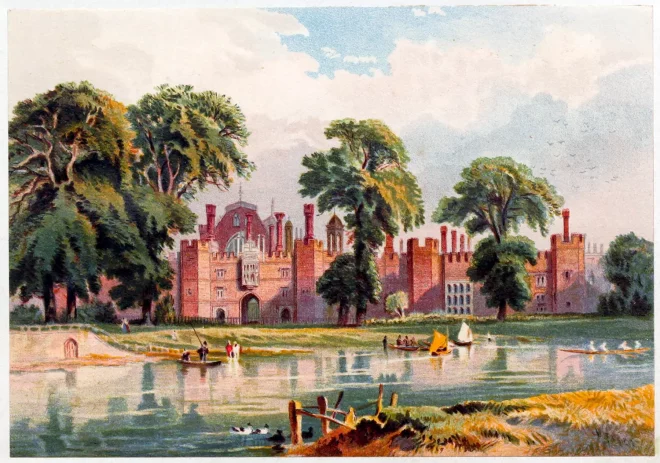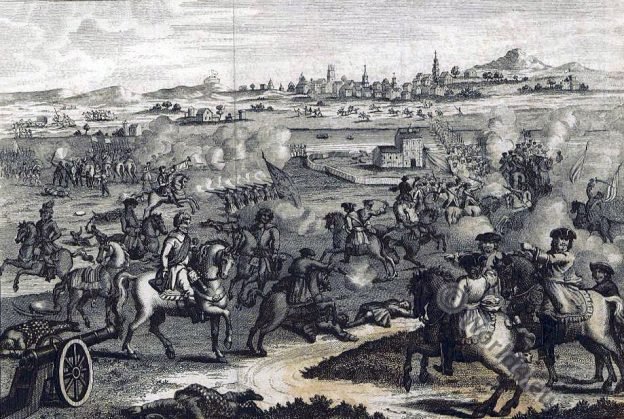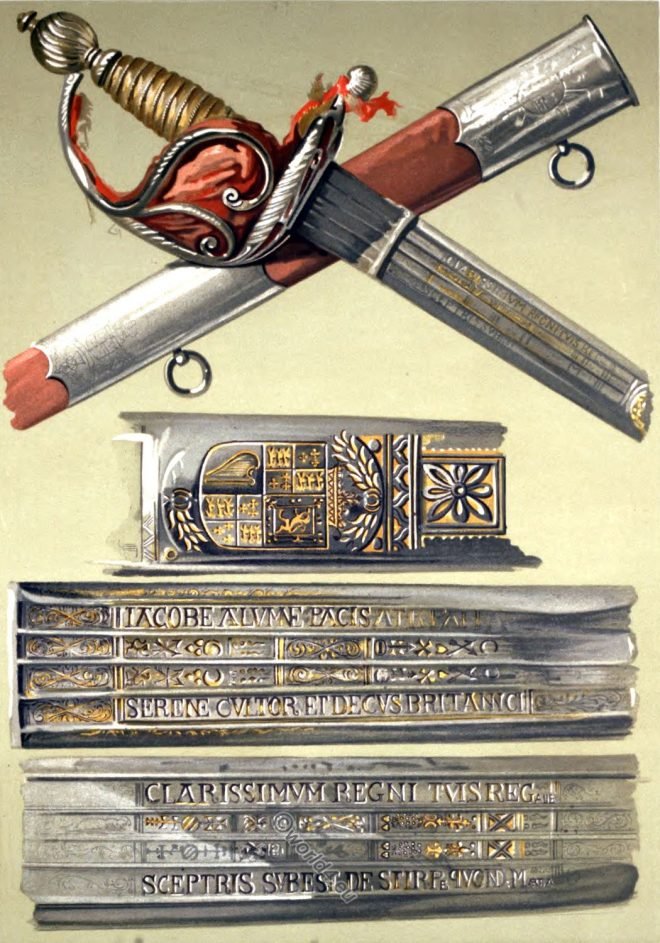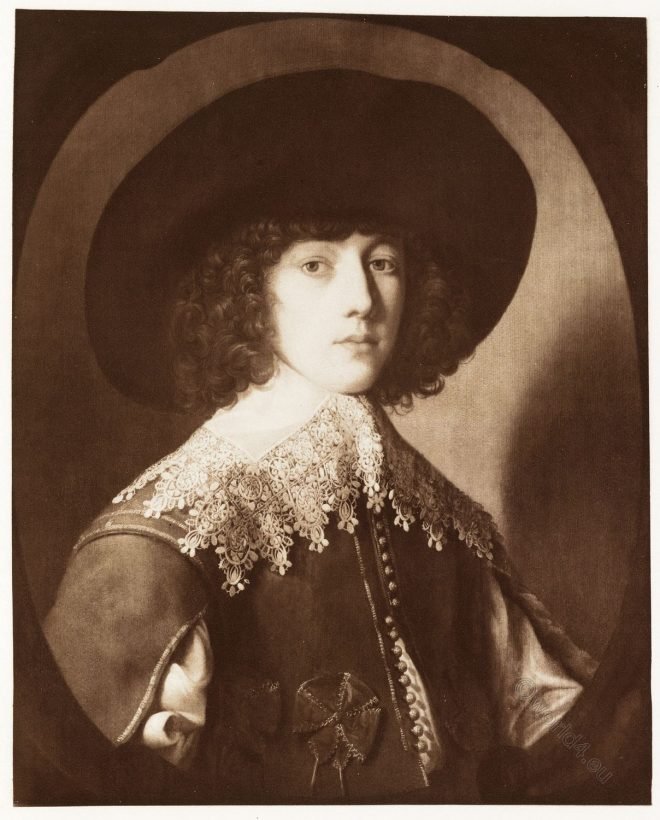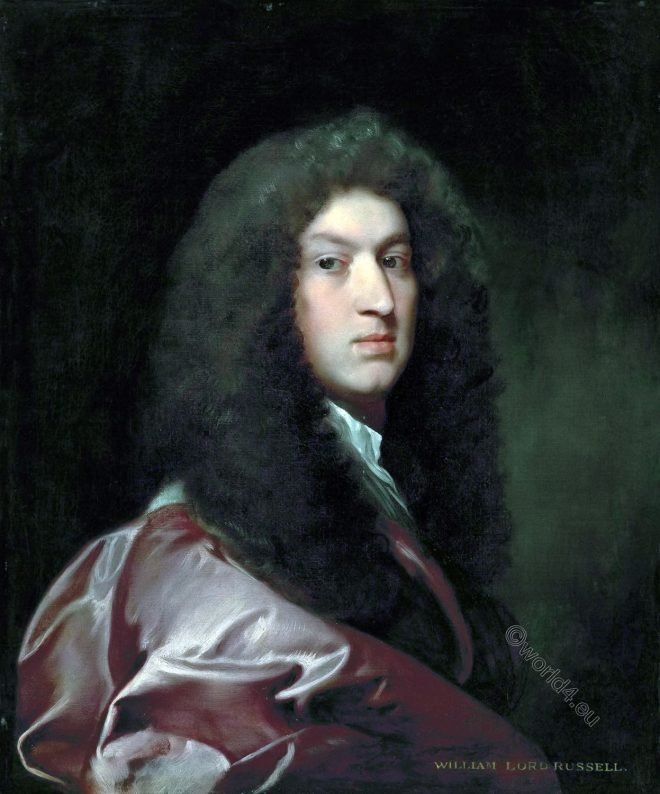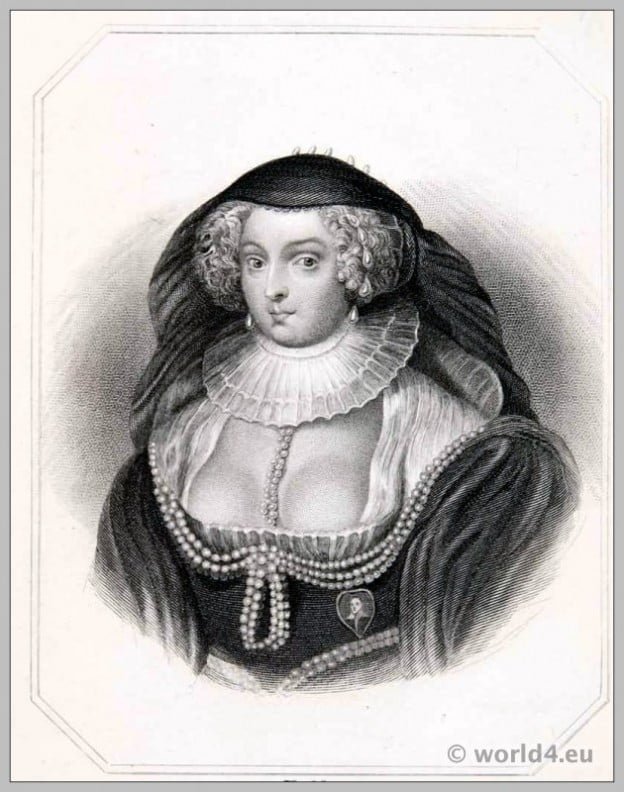On the history of costumes. Hundred and Fourth Sheet. England. XVIth and XVIIth century. Münchener Bilderbogen No. 1180. Fashion in England in 1640. Citizen woman. Lady in the street. Lord-Manor’s… Read More
Category: Stuart
London 1590. Merchant and merchant’s wife.
Costumes of a Merchant and merchant’s wife. London 1590.
Costumes of distinguished women. London 1590.
On the history of costumes. Fashion history. Baroque period. London 1590. Distinguished women.
Hampton Court Palace
Hampton Court Palace is a castle in far south-west London on the left bank of the River Thames
The escape of Charles II after the Battle of Worcester, 1651.
King Charles II escaped, and now entered upon a scene of adventures the most romantic that can be imagined.
Textiles and Embroidery during the Tudor and Stuart Periods.
Art in England during the Elizabethan and Stuart Periods. Textiles and Embroidery by Aymer Vallance.
The sword of James Graham, 1. Marquess of Montrose.
The sword of James Graham given by Charles I.
Prince Rupert, Count Palatine of the Rhine and Duke of Bavaria.
Prince Rupert of the Rhine (1619 – 1682), called Rupert the Cavalier, was Prince of the Palatinate from the house of the Wittelsbacher
The execution of the English politician Lord William Russell 1683.
Lord Russell, usually called Lord William Russell, son of William, Earl of Bedford, and Lady Ann Carr, daughter of Carr, Earl of Somerset.
Frances Stewart, Duchess of Richmond and Lennox
Frances Stewart was one of the great beauties of the Jacobean court, she was also the patron of Captain John Smith of the Virginia Colony.

